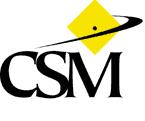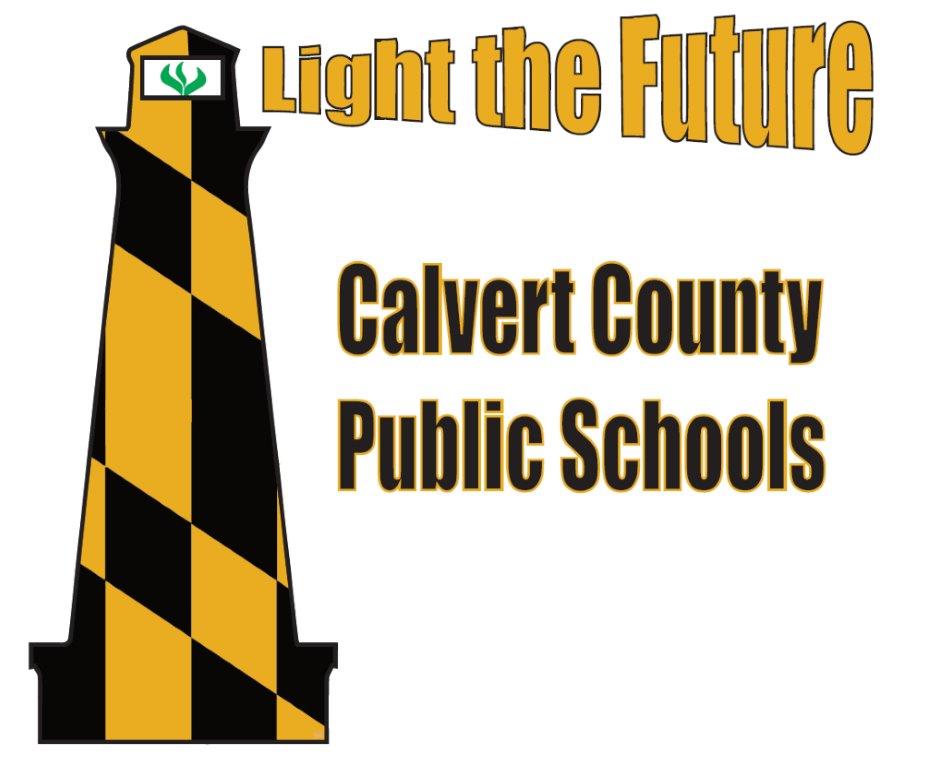
The College of Southern Maryland (CSM) founded in 1958, is a public community college serving Southern Maryland's Charles, St. Mary's and Calvert counties. CSM has over 11,000 students in its for-credit program and many other learners in the Ed2go non-credit program. CSM has three campuses in the regional and is building a regional campus. Besides offering face-to-face classes, many of the college's courses and degrees can be completed online. Students new to online learning can attend Online Class Orientation Sessions, offered just before each semester begins.
CSM is looking to both grow its online course offerings and reach other learners in the community. One way CSM has tried to increase its student base is through dual course enrollment offerings with local school systems.1 Dual enrollment means students take classes at CSM that count as college credit and can also satisfy high school graduation requirements per the Maryland State Department of Education (MSDE). in 2012, CSM had over 200 student in its dual enrollment program.2 CSM's dual enrollment students receive 50 percent off their college tuition. Unlike Advance Placement (AP) or International Baccalaureate (IB) courses offered at some high schools, dual enrollment courses are actual college courses - not college-like or college-level- and usually result in a student's progress being recorded on an actual college transcript. Thus, students taking online courses get a preview of what is expected of them in college so they won't be among the unprepared for college's rigors when they graduate. For CSM, high school students participating in the dual enrollment program develop familiarity with the campus and are more likely to enroll come graduation, a recruitment bonus.
A recent study by the Community College Research Center, Teachers College, Columbia University on dual enrollment outcomes found that dual enrollment program support the goal of college readiness and success.3
- Students who participate in dual enrollment programs have a better understanding of collegiate expectations, are more likely to graduate from high school and are more likely to enroll in college than similar students who do not participate.
- Dual enrollment participants have a higher college grade point averages than their non-participating peers, are more likely to persist in college and make good progress toward graduation. Importantly, these findings hold true from all types of students - including those such as makles and low-income students, who are often underrepresented in higher education.
CSM has been offering its dual enrollment option for local school systems for some time with students attending classes on one of the CSM's campuses. In some instances, students may take courses for both high school and college credit while remaining on their high school campuses.
Calvert County Public Schools

Calvert County Public Schools (CCPS) is one of the public school systems partnering with CSM in the dual enrollment program. Located in Calvert County, Maryland it comprises for high schools, six middle schools, and 12 elementary schools with over 16,000 students.
Heidi Kaminsky, Online Coordinator at CCPS, noted that CCPS has been offering dual enrollment courses with CSM for more than 15 years. The original Memorandum of Understanding was actually typed on a typewriter! Students have flexible scheduling options enabling them to take face-to-face courses on the CSM campus. This has worked for many years with students attending classes on the local campuses and reporting to their high schools later in the day. Depending on their class schedules, students can also opt for early release.
In 2009, CCPS reviewed four online courses developed by CSM using a review process outlined by MSDE. CCPS used both locally-and state-developed curriculum. Budgetary concerns prevented some of the courses from running immediately, but they're now active and providing students with online options. In the new program, formally launched in 2010, a student can now be dual enrolled in a CSM online course and have the course count toward high school graduation requirements. The online classes offered in the dual enrollment program provide students with options as to where they take courses. Some dual enrollment students don't have transportatin so they find it convenient to take the online courses. There are now around 100 students at CCPS in the online dual enrollment program.
Dual Enrollment Online Classes
CSM began offering 11th and 12th grade students in CCPS the option of enrolling in three online courses in 2010.4 These dual enrollment courses are open to students who have maintained a 2.50 grade point average and completed the 10th grade in CCPS or St. Mary's County or the 11th grade in Charles County. Some high school students enroll in the dual enrollment program to supplement their high school studies, while others choose the program for the academic challenges it offers
Successful completion of the following courses taught through CSM in an online environment may results in students also receiving high school credit:
- PSY1010-General Psychology
- PHY1010 and PHY1010L-Fundamentals of Physics I and Lab
- MTH1100-College Math I
- ENV1300 and ENV1300L-Environmental Science and Lab
High school students may also take other online courses offered by CSM but at this time these courses may not count for high school credit since they have not completed the course review process outlined below.
Currently, CCPS offers students online courses in Health, Advanced Placement (AP) Psychology, AP English Language and Composition, AP Calculus and AP Government and Politics. The number of course offered online has varied each year with enrollment and with course/instructor availability. This past year, CCPS ran a section of AP Psychology, two sections of Creative Writing and three section of Health. CCPS will run a section of Health and Spanish I and II during the summer of 2014.
CSM, CCPS and Quality Matters
One of the goals in the development of an online course is to ensure the high quality of its design. To assist with that effort, CSM looked to Quality Matters (QM) and its online and blended course design standards. CSM has been QM subscriber for a number of years and is systematically developing and evaluating courses based on QM's rigorous, research-based standards. QM's standards ensure online courses promote learner engagement and provide students with the tools and information they need to be successful.
A number of CMS courses have been certified as QM-Recognized Courses for their high quality.5 Dual enrollment courses are for both high school and college students, however, and MSDE guidelines require an online course to be reviewed by either the local school system or QM.6 Since these courses were developed at the higher education level and had already been certified using the Quality Matters Higher Education Rubric, we advanced the notion that they had undergone all the review they needed. Upon further consideration, we thought it best to conduct two full course reviews, a Higher Education review and a K-12 Secondary review. While there are similarities between many of the two Rubrics' specific standards, there are some differences and nuances within the annotations. These needed to be addressed in course reviews that would be used at both levels.
CSM and the participating school systems, including CCPS, sought to accelerate this double review process so QM researchers and K-12 staff conducted a correlation study of the Quality Matters Higher Education and K-12 Secondary Rubrics. The study revealed eight standards unique to the K-12 Secondary Rubric, appearing in addition to, or in significant different from, the standards in the Higher Education Rubric. Armed with the results of the correlation study, QM could recommend that a course being offered for dual credit could be reviewed under the guidelines of the Higher Education Rubric and then have a subsequent internal review by the school system (or an official Quality Matters K-12 Alternative Course Review) against the eight standards unique to the K-12 Secondary Rubric. Courses found to meet both reviews can be certified ad dual enrollment courses.
CCPS uses QM to guide online course development and adoption. While some of the courses developed are primarily for teachers' professional development, courses for student instruction are vetted through QM in conjunction with MSDE. Once MSDE has approved an online course, CCPS knows the quality of the course meets or exceeds the standards outlined in the K-12 Secondary Rubric. Additionally, two members of the CCPS' Office of Instructional Technology staff have completed the K-12 Applying the QM Secondary Rubric (K-12 APP). CCPS has taken both face-to-face and online training with QM. Learning about and applying the K-12 review standards to course reviews for students has really increased CCPS's awareness of and ability to identify and develop well-structured and -designed online courses.
QM interviewed Leah Geiger, Instructional Designer and Adjunct Professor in CSM's Social Science Department. She was CSM's Faculty Excellence Award recipient honoring adjunct faculty in 2012. She has worked with QM for over five years and, besides serving as CSM's QM Coordinator (QMC) (formerly Institutional Representative, or IR), she is a QM Peer Reviewer, Master Reviewer, and online facilitator who has facilitated for QM at the Higher Education and K-12 levels. Leah has had a number of her online courses certified by QM and said,
"Online learning in society if taking off and institutions of higher learning need to prove that quality and standards are being maintained. That's why I love Quality Matters. It is research-driven and -based, with national backing. It is nationally recognized by accrediting agencies and state departments of education, including MSDE, as a sign of quality, which means the world to me."7
Leah's 16 years of higher education experience, including nine years of teaching online in online and blended education environments, coupled with five years as a K-12 school counselor, made her an excellent candidate to oversee CSM's move to online courses for its dual enrollment program. The program is funding in part by a Title III Federal grant and some of those funds have been used to design online courses. The courses are designed at CSM and then reviewed using QM standards. Once the course has been QM-Certified at the higher education level it is then sent to a local school system for an abbreviated K-12 review using the eight standards. If those standards are met and the course is approved by MSDE,the course can be certified as a dual enrollment course.
Adjunct instructors at CSM teach most of the courses to the enrolled high school students. Since the program is still new, only a few students have been taking the courses to date. There is tremendous growth potential as both CSM and the local schools continue to market the courses,with many motivated people at both levels who want to see these courses succeed. The blending of higher education and K-12 is great for the staff and the students. "Having Quality Matters there to assist at both the K-12 and higher education levels has been great," Leah said. At CSM there are 25 faculty members who are Peer or Master Reviewer certified and many want to have their own courses QM-Certified and are looking to participate in reviews of other courses. CSM has a total of 60 courses certified with four more under review and 10 more getting ready for review.
QM was also used by CSM for its re-accreditation process as part of the self-study report, which is the first step in the re-accreditation process. The self-student report is a thorough review of a college's areas of excellence and opportunities for improvement in broad standards. Having a number of online courses certified was good for the process.
High-quality and well-designed online dual enrollment courses certified by QM offer excellent opportunities for CSM and its partner high schools to bridge the old education boundaries. It can allow for increased access and preparedness for all high school students as they make their way across the perceived moat between high school and college. Online courses offer a 21st-century approach to learning that is essential for students to meet the challenges of learning right now.
1 http://www.marylandpublicschools.org/about/Pages/School-Systems/index.a…
2 http://dlslibrary.state.md.us/publications/Exec/MSDE/MLDS/ED24-703.1_20…
3 http://ccrc.tc.columbia.edu/media/k2/attachments/dual-enrollment-colleg…
4 http://www.csmd.edu/Assets/ApplyAndRegister/credit/dual-enrollment/2015…
5 https://www.qmprogram.org/qmresources/courses/grouped_by_inst.cfm?progr…
